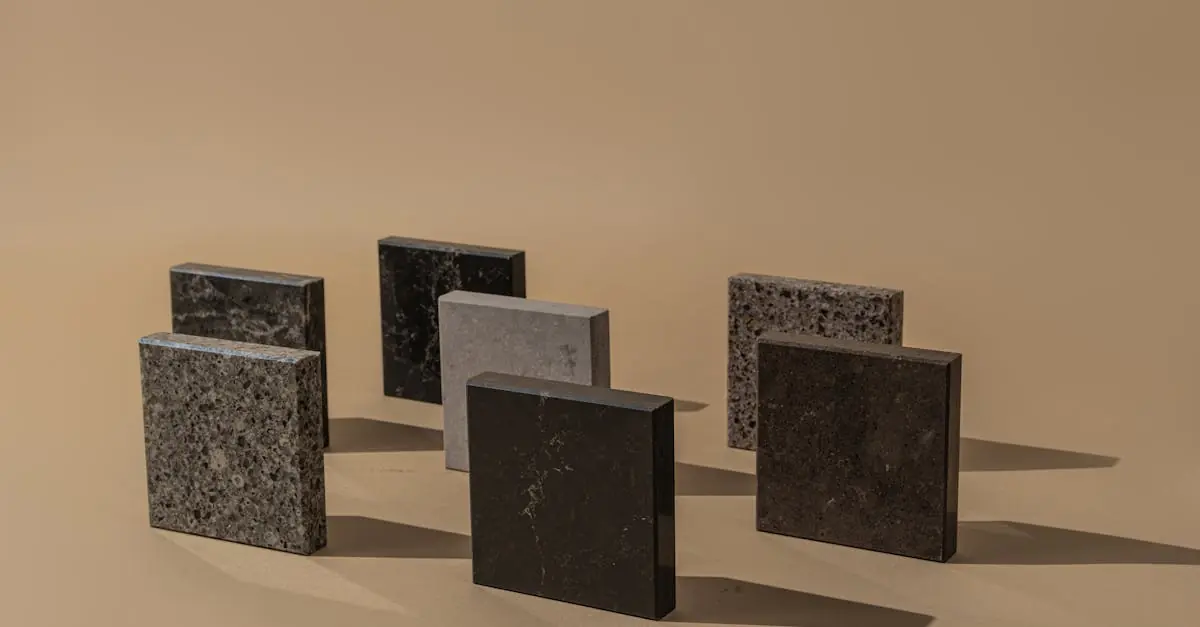Table of Contents
ToggleEvery room tells a story, but is yours a bestseller or a snooze-fest? Interior design concepts are the magic wands that transform mundane spaces into captivating realms. Whether it’s a cozy nook for sipping coffee or a vibrant living room that screams personality, the right design can elevate everyday life into an extraordinary experience.
Imagine walking into a space that feels like a warm hug, where every corner sparks joy and every color tells a tale. With the right mix of style, functionality, and just a dash of whimsy, anyone can create an environment that reflects their unique taste. So grab a cup of your favorite brew and dive into the world of interior design concepts that’ll inspire creativity and maybe even a little bit of envy from your friends.
Overview of Interior Design Concepts
Interior design concepts encompass various principles and elements that shape the aesthetic and functionality of spaces. Each concept serves to transform an area, reflecting the unique personality of its occupants. Space planning plays a crucial role; it involves arranging furniture and decor to maximize utility without sacrificing style.
Colors significantly impact mood and atmosphere. Certain palettes evoke calm, while others stimulate energy. Texture adds depth, creating visual interest through materials like wood, fabric, and metal. Accessories and furnishings enhance this effect, providing layers that enrich the overall design.
Lighting acts as a vital element in interior design. Natural and artificial lighting can alter perceptions of space and influence emotions. Strategic placement of light sources highlights important features, making environments feel inviting.
Sustainability is increasingly becoming a key factor in design choices. Utilizing eco-friendly materials and energy-efficient solutions promotes environmental responsibility while enhancing the aesthetic appeal.
Personal style brings everything together. Whether opting for minimalist, industrial, or bohemian themes, individuality must shine through every aspect of the design. Each concept aims to create spaces that not only look great but also resonate with the inhabitants’ values and lifestyles.
Understanding these concepts allows individuals to make informed choices when designing their homes or offices. It fosters creativity and encourages exploration of various styles, ensuring that living environments feel personal and connected to those who inhabit them.
Popular Interior Design Styles
Various interior design styles offer unique ways to enhance spaces. Those interested in design explore options that best reflect their personality and taste.
Minimalist Design
Minimalist design emphasizes simplicity and functionality. Clean lines contribute to an uncluttered look, creating a sense of calm. Neutral colors dominate the palette, often accompanied by natural materials like wood and stone. Furniture choices include essential pieces, reducing visual chaos. This style focuses on maximizing space and light, which promotes a serene atmosphere.
Bohemian Design
Bohemian design reflects eclectic personal expression. Vibrant colors mix with diverse patterns to create a lively aesthetic. Layered textiles, such as rugs and throws, add warmth and character. Artwork often features prominently, showcasing individuality and travel adventures. Plants contribute to a fresh ambiance, making spaces feel inviting and personal.
Industrial Design
Industrial design draws inspiration from urban settings. Exposed brick, metal accents, and concrete surfaces create an edgy look. Open layouts enhance spaciousness, highlighting structural elements. Vintage furnishings often complement this style, providing a distinct charm. Neutral palettes anchor the design, allowing for the occasional pop of color or unique accessory.
Key Elements of Interior Design
Understanding the key elements of interior design enhances spaces significantly. These components work together to create harmonious and functional environments.
Color Schemes
Color schemes impact mood and perception in any space. Utilizing complementary colors generates balance, while contrasting shades create visual interest. Warm colors, like reds and yellows, can energize a room, whereas cool colors, like blues and greens, tend to evoke calm. Neutral palettes, often used as a base, allow for versatility and can be easily complemented with accent colors. Selecting the right color scheme depends on the desired atmosphere and personal preference, ensuring the environment reflects individual style.
Furniture Selection
Furniture selection plays a crucial role in achieving functionality and comfort. Prioritizing pieces that fit the scale of the room ensures an inviting atmosphere. Choosing multi-functional furniture, such as storage ottomans or sofa beds, maximizes space in smaller areas. Styles should harmonize with the overall design theme; for instance, minimalist furniture suits modern aesthetics, while vintage pieces enhance eclectic designs. It’s essential to consider comfort and usability, as furniture not only serves a purpose but also contributes to the overall aesthetic.
Lighting Techniques
Lighting techniques significantly affect the ambiance and functionality of a space. Layering different types of lighting—ambient, task, and accent—creates a dynamic atmosphere. Ambient lighting serves as the main source of illumination, while task lighting focuses on specific areas like reading nooks or kitchens. Accent lighting highlights artwork or architectural features, adding depth to the environment. Incorporating natural light through windows or skylights optimizes energy efficiency and enhances mood. Understanding these techniques allows for the creation of inviting and bright spaces.
Trends in Interior Design Concepts
Current trends in interior design concepts showcase a blend of sustainability and technology, reflecting evolving preferences in modern living.
Sustainable Design
Sustainable design prioritizes eco-friendliness, utilizing materials like bamboo and recycled products. This approach minimizes environmental impact while enhancing aesthetic appeal. Designers focus on energy-efficient lighting and water-saving fixtures, contributing to reduced utility costs. Incorporating indoor plants not only improves air quality but also adds a natural touch. Furniture crafted from sustainable sources supports responsible consumption. Moreover, natural finishes and non-toxic paints create healthier living environments. Clients increasingly value designs that reflect personal ethics and commitment to the planet.
Smart Home Integration
Smart home integration emphasizes technology that enhances convenience and efficiency. Solutions include programmable thermostats and automated lighting systems that optimize energy usage. Voice-activated assistants control various devices, allowing homeowners to manage their environments effortlessly. Integrated security systems provide peace of mind while offering modern styling. Additionally, smart appliances streamline daily tasks, contributing to a seamless living experience. Designers increasingly incorporate these elements into their plans, ensuring functionality meets contemporary aesthetics. Adopting smart technology creates spaces that adapt to individual lifestyles and needs.
Interior design isn’t just about aesthetics; it’s a powerful tool for enhancing the quality of life. By understanding key concepts like space planning and color theory, individuals can create environments that truly resonate with their personalities. Embracing sustainable practices and integrating technology further enriches the design experience, ensuring spaces are both functional and eco-friendly.
As trends evolve, the ability to blend personal style with innovative design elements remains essential. Whether opting for minimalist simplicity or vibrant bohemian flair, each choice reflects unique tastes and values. Ultimately, the journey of interior design is about crafting spaces that inspire joy and comfort, making every home a true reflection of its inhabitants.




